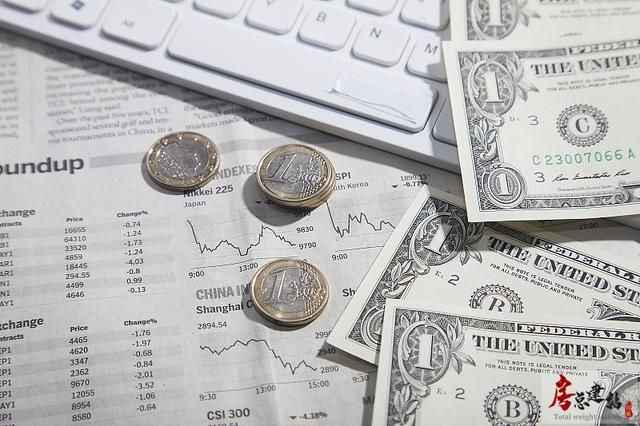The yield of U.S. Treasury bonds (hereinafter referred to as "U.S. bonds") is called the "anchor of asset pricing" because its yield can be regarded as risk-free and certain with the reputation guarantee of the U.S. government, while other risk assets will be priced according to their risk status and the yield level of U.S. bonds. Among the US bond yields of various terms, the 10-year US bond yield is particularly important. It is the anchor of long-term interest rate and has an important impact on the economy and financial markets.
Recently, the yield of 10-year US bonds has risen sharply, breaking through 1.7% on March 18, causing turmoil in financial market and heated discussion from all walks of life. However, for many people, the rise of US bond yield and its impact are not obvious. Although the US bond yield and related discussions sound high-ended, the logic is not complex. Here we want to clarify some important concepts in the discussion on US bond yield and its impact on the financial market.

Concept of bond yield
An important function of the financial market is the inter-temporal allocation of funds. In the financial market, the time value of funds is important. The value of 1 dollartoday is different from that of 1 dollarin the future. From today's perspective, we pay more attention to the present value of 1 dollar.
Generally speaking, for bonds that have been issued, the interest and face value are fixed, so the bond yield to maturity is negatively correlated with the bond price, that is, the bond yield increases and the bond price decreases. If the price is determined by supply and demand, the decline of bond price indicates that supply exceeds demand in the bond market.
The current oversupply of bonds will have an impact on the future issuance of new bonds, in other words, the interest rate of new bonds needs to be increased before investors are willing to buy, which not only increases the cost of issuing bonds, but also raises the interest rate center of the economy.
In addition to the yield to maturity, there is also the concept of holding yield, which means that one holds the bond for a period of time during the bond’s duration and without holding them to maturity, the yield obtained by it can be calculated by using the interest plus the difference between the purchase and sale price of the bonds and the principal of the bonds purchased. Because the holding periods vary greatly, only investors pay attention to the yield, what the market cares is the yield to maturity.

Reasons for the recent rise in US bond yields
For bonds that have been issued, the interest rate is fixed, so the actual income of holding bonds will be influencedwhen inflation expectations rise. Therefore, in the secondary market, bond buyers will require bond prices to be reduced, so as to achieve a higher yield to maturity and cope with the adverse impact of rising inflation.
The yield of 10-year US bonds has been on the rise since the end of last year, but the rising rate has accelerated recently and the yield curve has become steeper, and the rise of inflation expectation accounts greatly for it according to market analysis. Specifically, the following factors contribute to the rise of inflation expectations:
First, the Federal Reserve maintains a loose monetary policy. Recently, Federal Reserve Chairman Jerome Powell said at the semi-annual monetary policy report in the Senate banking, housing and Urban Affairs Committee that he would maintain the current target range of federal fund interest rate and continue to buy treasury bonds and institutional mortgage-backed securities at the current speed. In addition, the Biden administration's large-scale stimulus policy is being implemented, and the economic recovery will also raise inflation expectations;
Second, the expectation of large-scale vaccination and economic recovery has increased, driving the rise of inflation expectation;
Third, the rise in commodity prices further raised inflation expectations. Since this year, commodity prices have continued to rise. Many institutions predict that commodity prices will continue to rise in the future.

The impact of rising US bond yields on financial markets
Here, we should pay attention to the distinction between the temporary rise and the trend rise of US bond yield. The temporary rise will not causegreat impact on the financial market, but the trend rise will.
(1) Stock market
Theoretically, the US bond market and the stock market may show a "seesaw" effect, but in reality there is no close relationship between the two.
Specifically, for the rise of US bond yield this, some analysts believe that it will cast negative impact on the stock market:
On the one hand, the trend rise of US bond yield is affected by the increase of inflation expectation, which also means that the central bank's monetary policy may be tightened in the future, which will have an adverse impact on the stock market and other financial markets;
On the other hand, the rise in US bond yields means the increase of attractiveness of US bonds, which will also attract funds from the stock market to the bond market, leading to the decline of the stock market.
What is important is to distinguish between the temporary impact and the long-term impact. The sharp and rapid rise of US bond yield may have an impact on the stock market in the short term, in which investor sentiment and risk appetite play an important role. In the long run, after the volatility of US bond yield returns to normal, if there is no significant change in investor sentiment and risk preference, the role of US bond yield in the operation of the stock market will decline.

(2) Foreign exchange market
There is no definite connection between the U.S. Treasury bond yield and the U.S. dollar index in the long term, yet, the relationship between the two seems to be clear in the short run, that is, there is an apparent negative correlation between the two. When the U.S. Treasury bond yield rises, the U.S. dollar index weakens, and vice versa.
First, we should be clear that the U.S. dollar index’s representation of the U.S. dollar and the exchange rate is a relative concept while the U.S. bond yield is an absolute concept. A more meaningful comparison is between the U.S. bond yield with that of other countries, then the comparison can be used to analyze the U.S. dollar index.
Some people believe that the U.S. dollar index caU.S.es the U.S. bond yield, and its logic is as follows: under the weak U.S. dollar environment, the siphoning effect of the U.S. capital market is weak, and the funds may flow to other markets, resulting in less demand for U.S. bonds, prices decrease, and yields increase; On the contrary, in the robust dollar environment, the attractiveness of the U.S. financial market is high, funds flow into the U.S. bond market, the price of U.S. bonds increases and the yield decreases. This performance is more noticeable when the market risk appetite is low. The situation of the U.S. dollar index will also affect the U.S. bond yield through inflation expectations. A weak U.S. dollar index will increase imported inflation, increasing the U.S. bond yield and vice versa.
At the same time, the factor affecting the U.S. dollar index and U.S. bond yield is the capital flow. If the capital flows to the U.S.. dollar, including U.S. Treasury bonds, the U.S. dollar will strengthen, the U.S. bond price will rise, and the yield will fall. The opposite is true. There may be other reasons for the influx of funds into the U.S. financial market, such as investors seeking refuge, and the strengthening of the U.S. dollar, and the decline of U.S. bond yields become the results. Therefore, the relationship between the U.S. dollar index and U.S. bond yield should be analyzed accordingly.

(3) Impact on some emerging market economies
On March 18, the central banks of Turkey and Brazil announced interest rate hikes. The next day, the Central Bank of Russia launched the same announcement. The market expects that the central banks of some other emerging market economies are also on the way to raising interest rates. The main reasons for interest rate hikes in emerging market economies are inflation and capital outflows, which may be affected by the rise in U.S. bond yields.
The economic and financial situation of some emerging market economies is not optimistic. The scale of foreign debt continues to increase, coupled with the rise of inflation, the risk increases. The increase in U.S. bond yields then hit emerging markets. Capital outflows seek a stable high yield, which has put pressure on the currencies of emerging markets. The pressure forces them to increase interest rates to suppress inflation and improve their attraction to capital, despite that the interest rate increase may not be appropriate for the economy.



